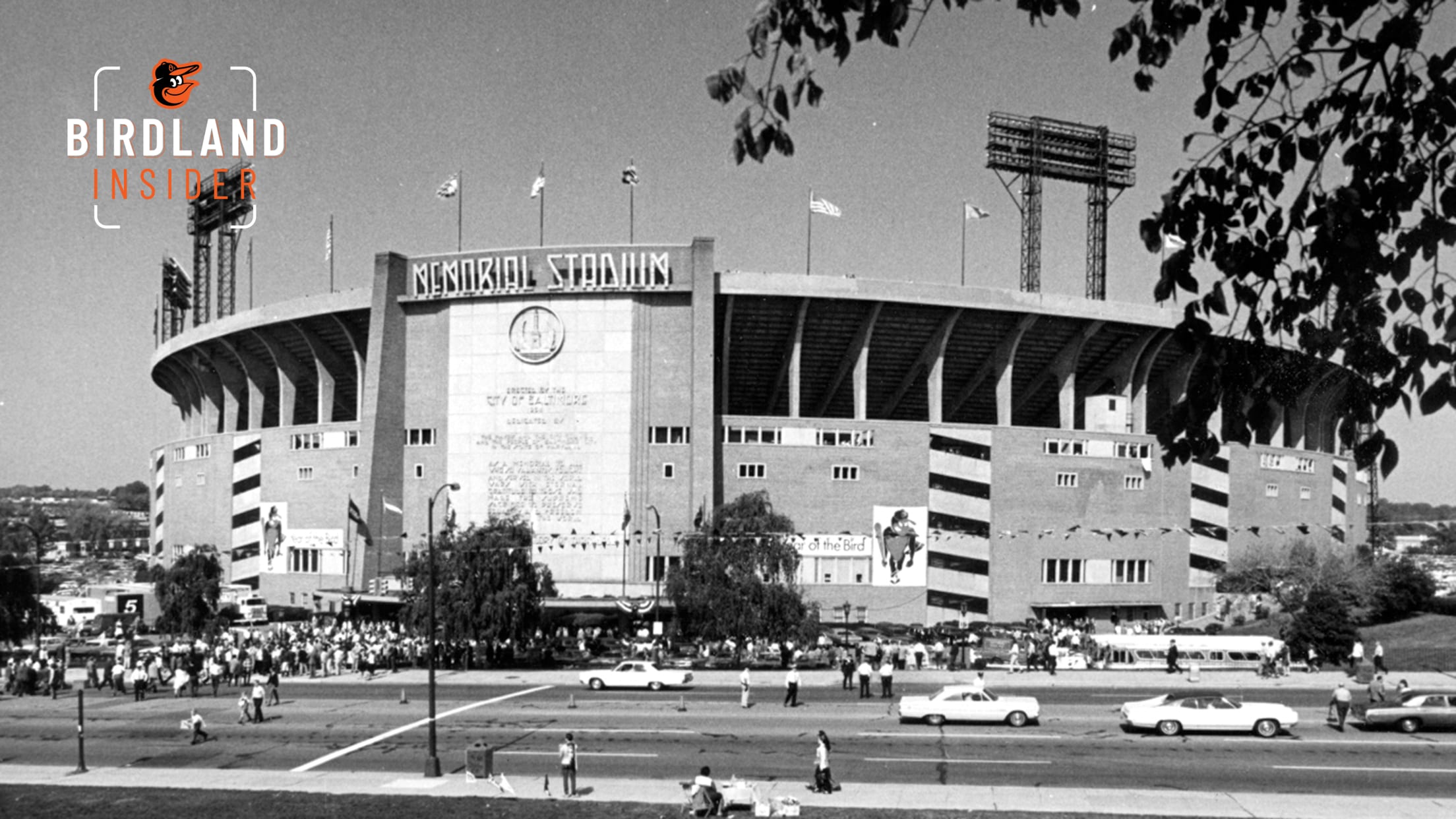
Memorial Stadium is still here -- just look around
The 2020 season marks the team’s 28th year at Oriole Park at Camden Yards, “the ballpark that forever changed baseball.” Hard to believe, but it is now the 10th oldest ballpark in the Major Leagues -- and every one that has opened since owes its existence to what was created in Baltimore.
Even so, nearly 30 years after the Orioles last played a game there, Memorial Stadium still occupies a significant part of Baltimore’s sports history, as well as the childhood of many fans. The Orioles played there for 38 years before moving into their new downtown home.
Younger fans and those new to Baltimore may wonder what became of “the old gray lady,” as Orioles catcher Rick Dempsey referred to it in a poem he wrote as the Birds prepared to play their last game there.
The Orioles closed out their stay at the old stadium, located on 33rd Street in the Waverly area of the city, on October 6, 1991. The season-ending game -- a 7-1 loss to the Detroit Tigers -- was not the reason why 50,700 fans filled the place that day. The team was finishing a dismal season, but the fans who came wanted to revel in one last chance to soak in the atmosphere. An elaborate post-game ceremony, in which more than 100 past and current Orioles took their places on the field for one last curtain call, brought back a flood of memories -- and tears.
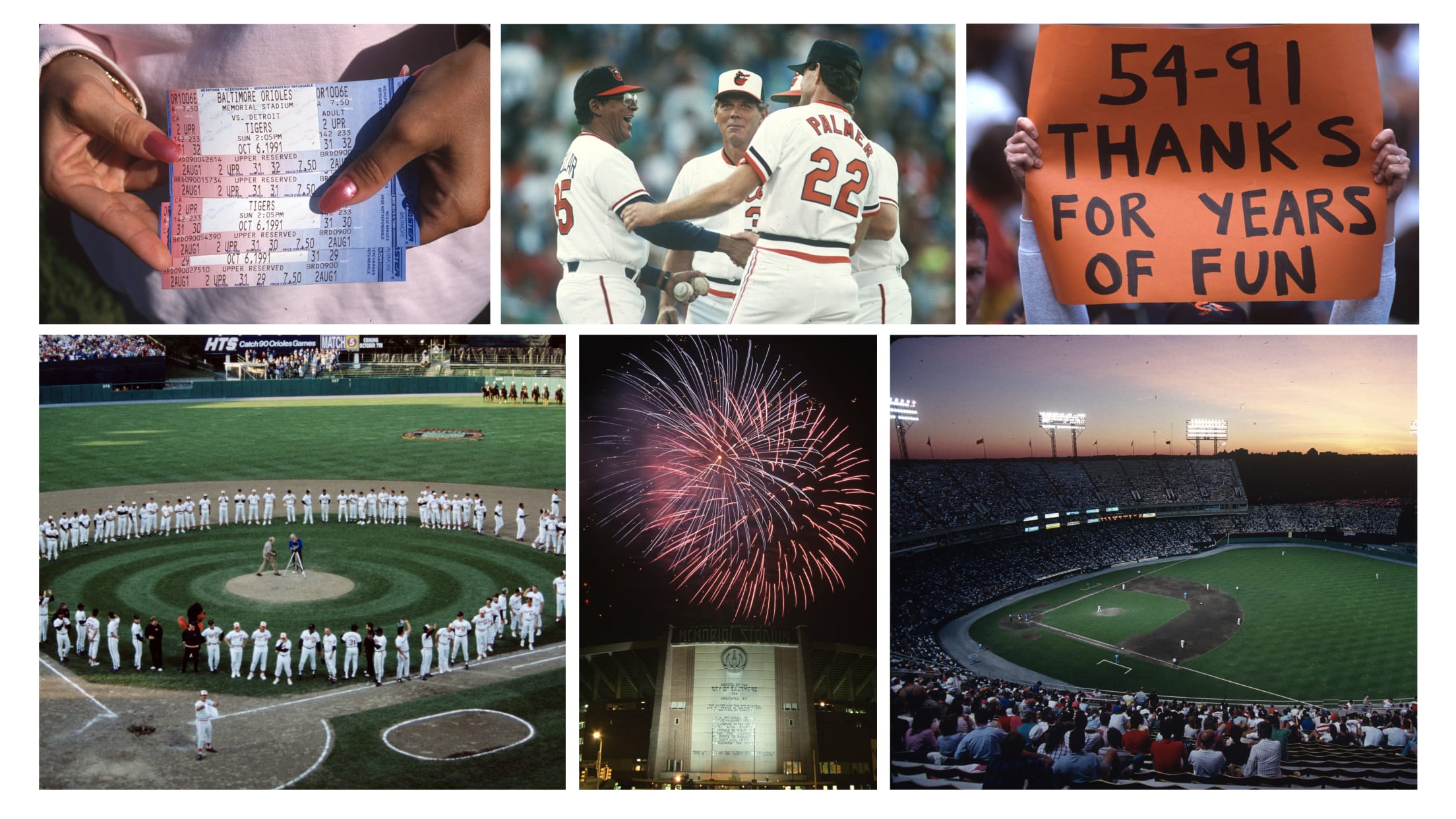
The National Football League’s Colts had left the city in March 1984, and now the Orioles would be gone from the stadium, too. But they would not be the last tenants at Memorial Stadium. The Bowie Baysox, the Orioles Double-A minor league affiliate, played their inaugural season there in 1993 before Prince George’s County Stadium was completed. The Baltimore Stallions of the Canadian Football League made it their home in 1994 and 1995. And when the NFL’s Cleveland Browns moved to Baltimore and became the Ravens, they played their first two seasons (1996 and 1997) on 33rd Street before moving to their new stadium, in the Camden Yards footprint just south of Oriole Park.
When the Ravens moved to their new home, Memorial Stadium stood empty for four years before being demolished in the spring of 2001.
Though there were initial plans to save and retain the front of the stadium, with its dedication as a memorial “to all who so fought valiantly fought in the World Wars,” it was not structurally sound to stand on its own and had to be taken down.
Bricks, seats, concession stand signs and other items were sold to fans. Much of the concrete rubble from the stadium was used to build a reef in the Chesapeake Bay off Maryland’s Eastern Shore.
Today, the 33-acre site is home to Stadium Place, a mixture of retail shops, senior-housing, a youth center, YMCA, and playground, as well as a youth baseball field modeled after the old stadium and developed by the Cal Ripken Sr. Foundation. Home plate of the kids’ field is in the same place that it was when the major leaguers played there.
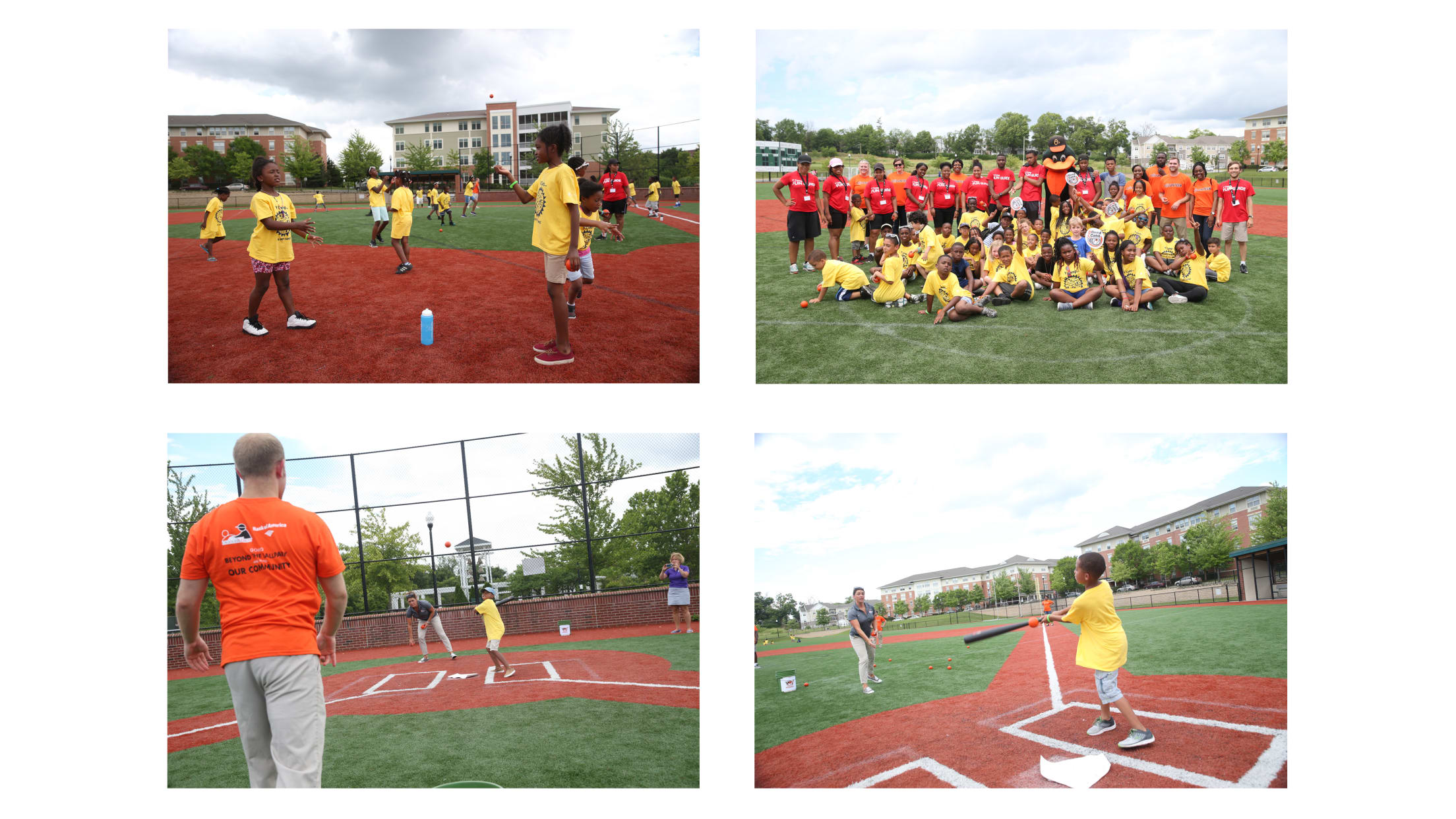
A plaque was erected at Stadium Place, telling of the site’s rich history, which included six World Series and an NFL championship game. In addition to the Orioles and Colts, Joe Louis recorded his last boxing win there in 1951, a unanimous decision over Jimmy Blevins (two months before losing his last fight to Rocky Marciano). The great Pele played a soccer game there in the late 1960s.
Independence Day fireworks shows, Memorial Day orchestra concerts and other non-sports events often filled the stadium. How many people bought Christmas trees from the parking lot, or skated on the rink erected in the winter?

Starting as Municipal Stadium, a single deck enclosure built in the 1920s, it hosted numerous high school and college football games, including two Army-Navy contests, before the minor league Orioles moved there in 1944 following a July 4 fire that destroyed their small wooden baseball park.
The stadium went through several renovations, starting in 1950, and eventually was renamed Memorial Stadium to honor the country’s war veterans. When Major League Baseball returned with the St. Louis Browns’ move to Baltimore after the 1953 season, the upper deck was added.
After the Orioles’ final game in 1991, the grounds crew dug up home plate and transported it to the site of the new ballpark, where it was replanted and served during the first season at Oriole Park. It has since been replaced, but parts of Memorial Stadium can still be found if you look around Camden Yards.
Did you know that both foul poles at Camden Yards were used at Memorial Stadium? The right field foul pole, affixed to the top of the wall by the flag court, was used for 37 years on 33rd Street before being moved here. After the 2001 season, the original left field foul pole at Camden Yards was replaced with the left field marker that was used at Memorial Stadium.
In 2003, a memorial wall was dedicated outside the Camden Yards gates at the south end of the B&O Warehouse on Eutaw Street. The 11-foot tall granite wall honors Maryland residents who were killed in all of our country’s wars and includes the final words of the famous phrase from the Memorial Stadium façade -- “Time Will Not Dim the Glory of Their Deeds.” Importantly, they are the original stainless steel letters from the front of the old stadium.
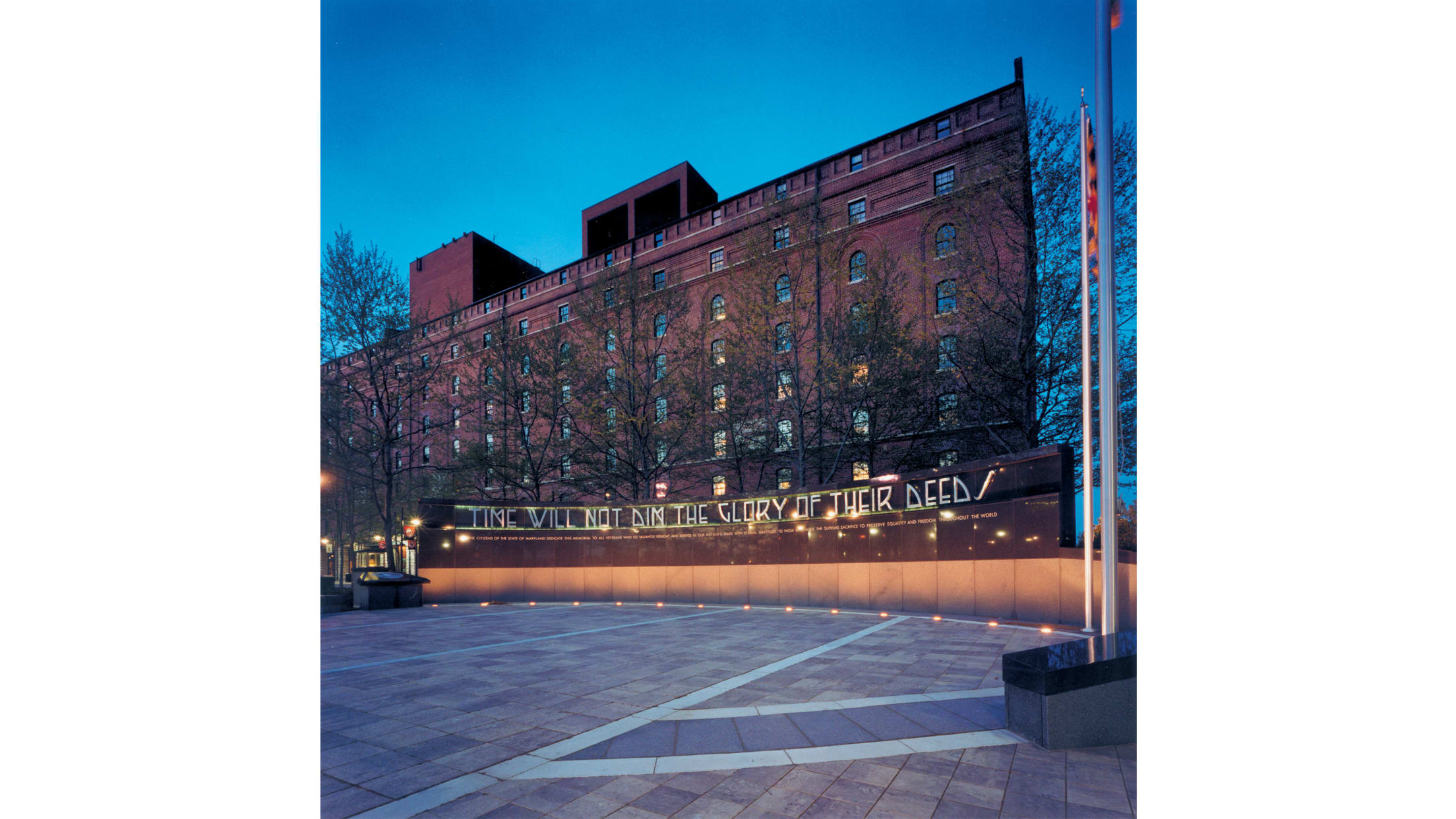
In addition, an urn from the Memorial Stadium lobby, containing soil from all foreign American military cemeteries, is displayed under glass at the memorial wall, along with a plaque explaining the significance of Memorial Stadium’s history.
Along with many photos of Rick Dempsey and Oriole greats from the past, those entering Dempsey’s Brew Pub on Eutaw Street will find a pair of seats from Memorial Stadium by the hostess stand. Have a seat and compare them to the wider and more modern seats of Camden Yards.
The dedication plaques at the entrances to two of Camden Yards’ three left field party suites -- named for Orioles legends Frank Robinson and Brooks Robinson -- once graced the foyer of Memorial Stadium, along with a similar plaque dedicated to Colts great Johnny Unitas, which is now held by the Babe Ruth Museum, and the urn now in the Memorial Wall. (The plaque for the third Camden Yards party suite, named for Orioles legend Jim Palmer, was modeled after the Robinson plaques but was made for Camden Yards.)
In 2016, a locker from the Orioles’ clubhouse at Memorial Stadium was added to the All-Star Lounge in the left field corner of the club level. The locker contains bats, balls and uniforms used by various Orioles through the years, many from the old stadium years. And the locker itself was the one used by none other than Hall of Fame third baseman Brooks Robinson.
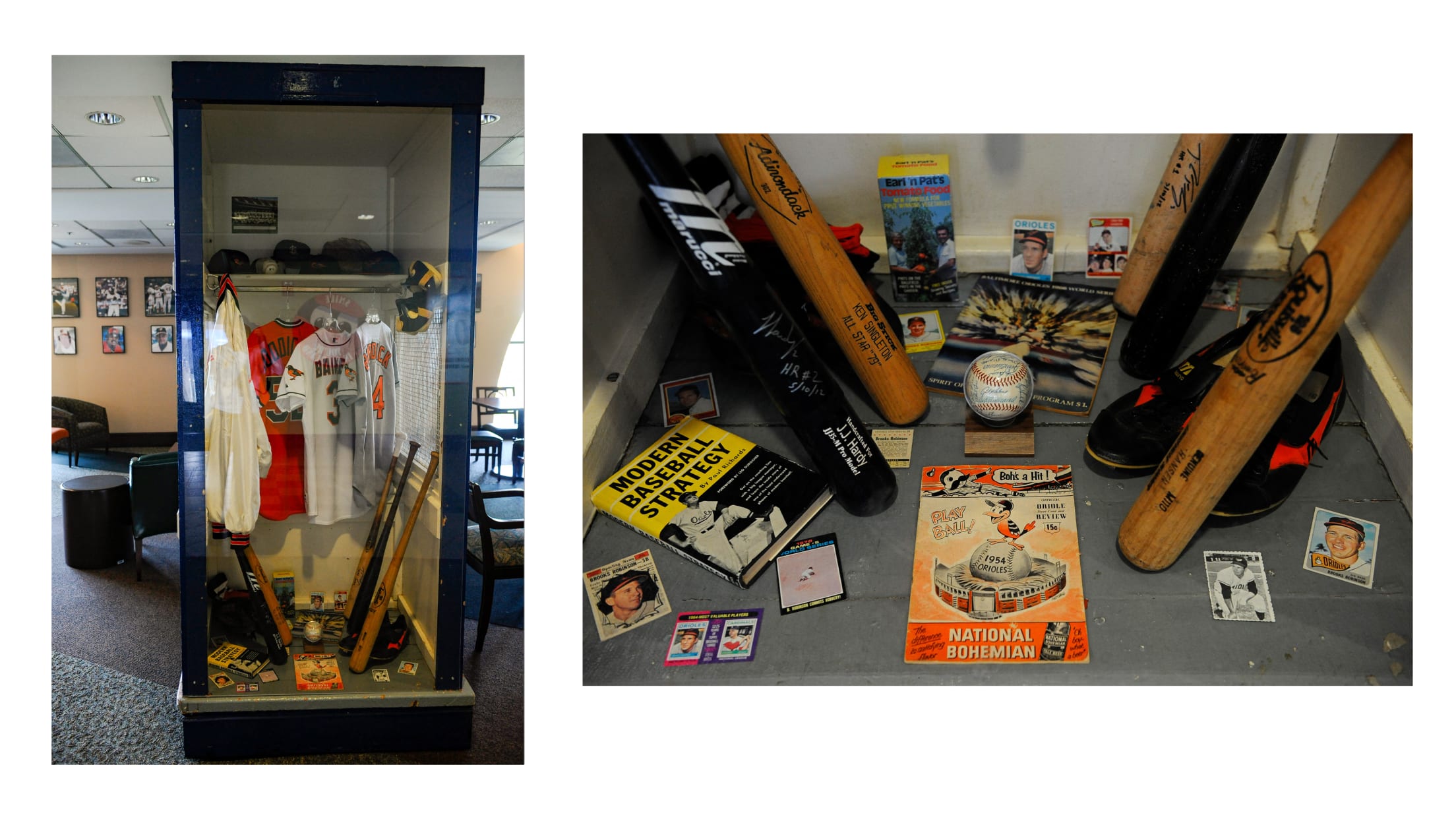
Of course, two traditions born at Memorial Stadium in the 1970s have carried on at Camden Yards. Fans still yell “O” during the playing of the National Anthem, much like they did when Wild Bill Hagy’s crew began doing it in Section 34 nearly 45 years ago.
And John Denver’s “Thank God I’m a Country Boy” -- whose origins as an Orioles anthem arose from former shortstop Mark Belanger’s friendship with the song’s writer, John Martin Sommers -- still is played during the seventh inning stretch at home games.
To some, Memorial Stadium is just a memory from childhood. Younger Orioles fans may know it only as a place talked about fondly by older generations, who remember the “Roar from 34” or the night “Orioles Magic” was born, and when the Robinsons, Jim Palmer, Earl Weaver, and others were leaving their marks on Orioles history.
Oriole Park at Camden Yards may look and feel totally different, but there still are vestiges of the old stadium that have been carried over. The venue may have changed, but the traditions and many artifacts remain, meaning Memorial Stadium is still with us.

